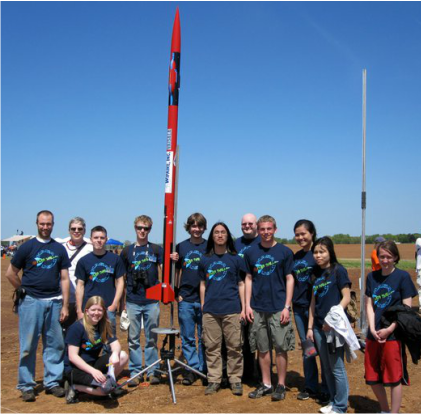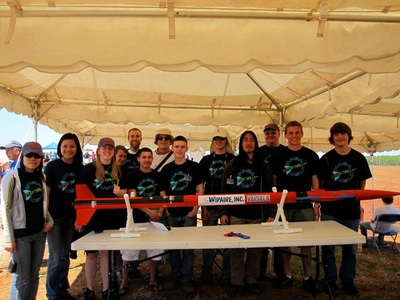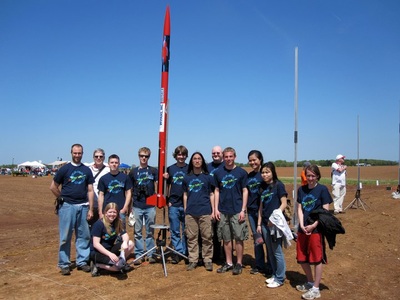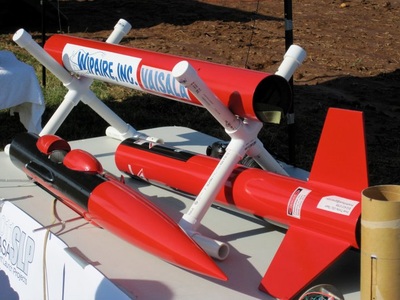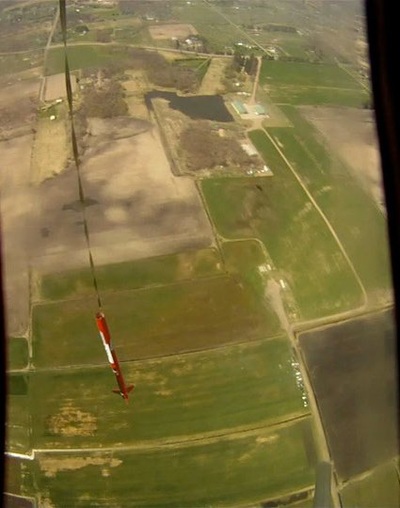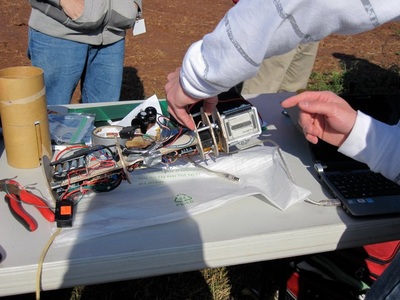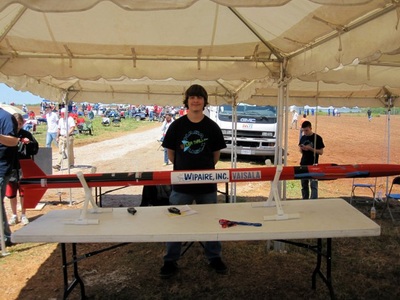|
The Inver Thrills rocketry team at Inver Hills Community College competed in the 2011 NASA University Student Launch Initiative competition. The competition required teams to build and fly a high powered rocket that carried a scientific payload. 52 college teams competed, each carrying vastly different payloads. The one design commonality between the teams was a target rocket flight height of 1 mile. The competition strictly follows the NASA system design evaluations with remote design reviews at each step of the way with NASA employees overseeing the competition.
I participated in the competition during my senior year of high school as a post secondary enrolled student at Inver Hills. Nearly half of our team were high school seniors in the same situation as myself. With only two other community colleges at the competition we were the outlier, before even accounting for our team composition. https://patch.com/minnesota/invergroveheights/inver-hills-students-who-built-launched-rocket-earn-hba26e0c23f |
Payload
Our payload was selected due to interest from an employee at NASA that desired the criteria listed below.
-1 mile target flight apogee
-Temperature (launch-10 min. post land)
-Barometric pressure (launch-10 min. post land)
-Solar irradiance (post apogee-10 min. post land)
-Visual of horizon (post apogee-10 min. post land)
Measuring temperature and pressure are as easy as finding the right sensor and integrating it into your data acquisition system. Solar irradiance and a visual of the horizon required gimbals in order to meet their focal views. In order to collect data, the solar irradiance sensor needed to be pointed towards the sun at all times. In the gallery below you can see the gimbal solution for these sensors. In addition to requiring a gimbal, we implemented deployable landing legs to ensure the payload remains upright upon landing for the 10 minute acquisition window.
-1 mile target flight apogee
-Temperature (launch-10 min. post land)
-Barometric pressure (launch-10 min. post land)
-Solar irradiance (post apogee-10 min. post land)
-Visual of horizon (post apogee-10 min. post land)
Measuring temperature and pressure are as easy as finding the right sensor and integrating it into your data acquisition system. Solar irradiance and a visual of the horizon required gimbals in order to meet their focal views. In order to collect data, the solar irradiance sensor needed to be pointed towards the sun at all times. In the gallery below you can see the gimbal solution for these sensors. In addition to requiring a gimbal, we implemented deployable landing legs to ensure the payload remains upright upon landing for the 10 minute acquisition window.
